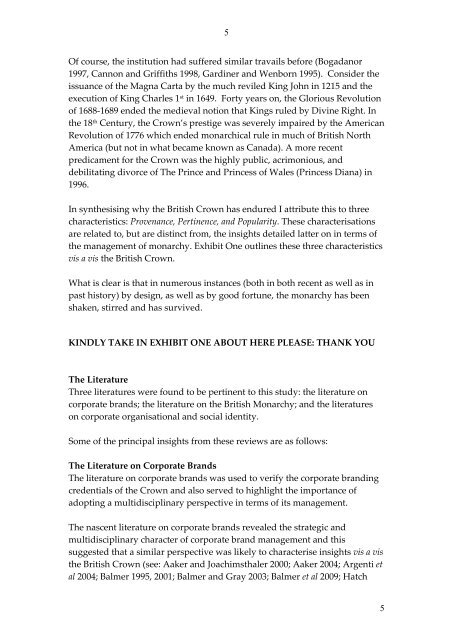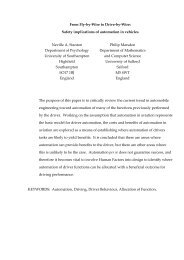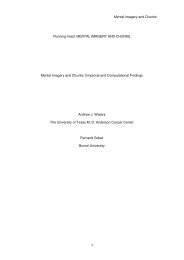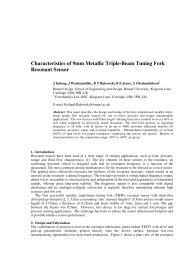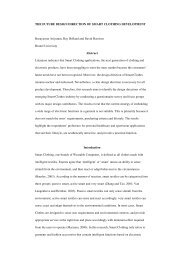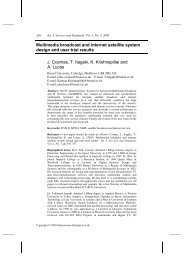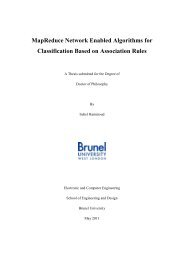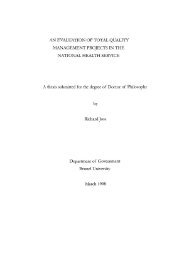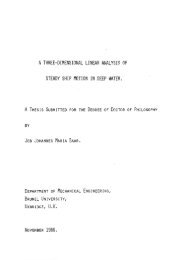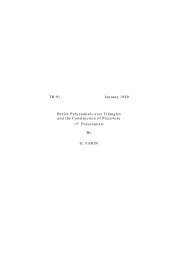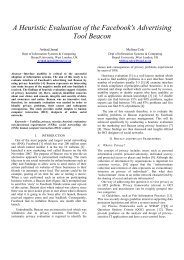insights from the british monarchy - BURA - Brunel University
insights from the british monarchy - BURA - Brunel University
insights from the british monarchy - BURA - Brunel University
You also want an ePaper? Increase the reach of your titles
YUMPU automatically turns print PDFs into web optimized ePapers that Google loves.
5<br />
Of course, <strong>the</strong> institution had suffered similar travails before (Bogadanor<br />
1997, Cannon and Griffiths 1998, Gardiner and Wenborn 1995). Consider <strong>the</strong><br />
issuance of <strong>the</strong> Magna Carta by <strong>the</strong> much reviled King John in 1215 and <strong>the</strong><br />
execution of King Charles 1 st in 1649. Forty years on, <strong>the</strong> Glorious Revolution<br />
of 1688-1689 ended <strong>the</strong> medieval notion that Kings ruled by Divine Right. In<br />
<strong>the</strong> 18 th Century, <strong>the</strong> Crown’s prestige was severely impaired by <strong>the</strong> American<br />
Revolution of 1776 which ended monarchical rule in much of British North<br />
America (but not in what became known as Canada). A more recent<br />
predicament for <strong>the</strong> Crown was <strong>the</strong> highly public, acrimonious, and<br />
debilitating divorce of The Prince and Princess of Wales (Princess Diana) in<br />
1996.<br />
In syn<strong>the</strong>sising why <strong>the</strong> British Crown has endured I attribute this to three<br />
characteristics: Provenance, Pertinence, and Popularity. These characterisations<br />
are related to, but are distinct <strong>from</strong>, <strong>the</strong> <strong>insights</strong> detailed latter on in terms of<br />
<strong>the</strong> management of <strong>monarchy</strong>. Exhibit One outlines <strong>the</strong>se three characteristics<br />
vis a vis <strong>the</strong> British Crown.<br />
What is clear is that in numerous instances (both in both recent as well as in<br />
past history) by design, as well as by good fortune, <strong>the</strong> <strong>monarchy</strong> has been<br />
shaken, stirred and has survived.<br />
KINDLY TAKE IN EXHIBIT ONE ABOUT HERE PLEASE: THANK YOU<br />
The Literature<br />
Three literatures were found to be pertinent to this study: <strong>the</strong> literature on<br />
corporate brands; <strong>the</strong> literature on <strong>the</strong> British Monarchy; and <strong>the</strong> literatures<br />
on corporate organisational and social identity.<br />
Some of <strong>the</strong> principal <strong>insights</strong> <strong>from</strong> <strong>the</strong>se reviews are as follows:<br />
The Literature on Corporate Brands<br />
The literature on corporate brands was used to verify <strong>the</strong> corporate branding<br />
credentials of <strong>the</strong> Crown and also served to highlight <strong>the</strong> importance of<br />
adopting a multidisciplinary perspective in terms of its management.<br />
The nascent literature on corporate brands revealed <strong>the</strong> strategic and<br />
multidisciplinary character of corporate brand management and this<br />
suggested that a similar perspective was likely to characterise <strong>insights</strong> vis a vis<br />
<strong>the</strong> British Crown (see: Aaker and Joachimsthaler 2000; Aaker 2004; Argenti et<br />
al 2004; Balmer 1995, 2001; Balmer and Gray 2003; Balmer et al 2009; Hatch<br />
5


